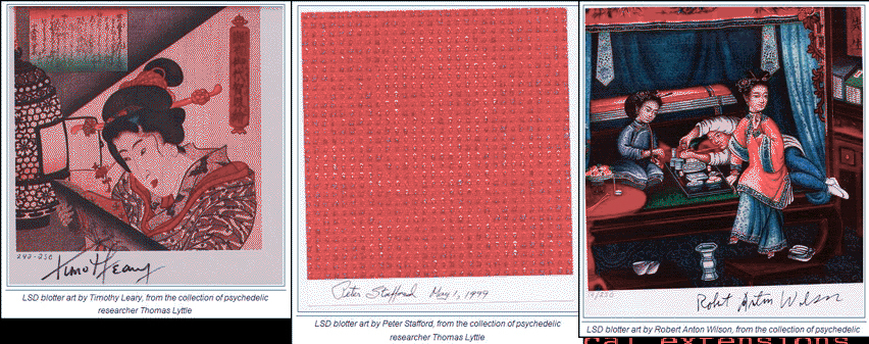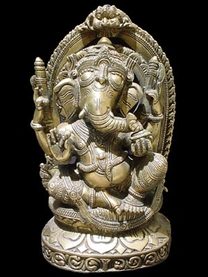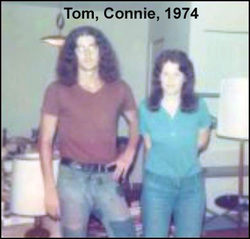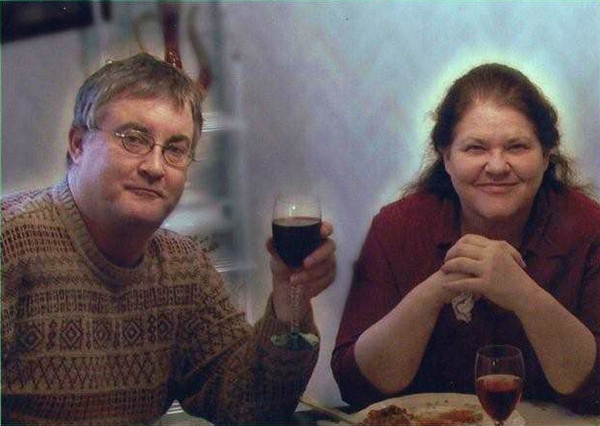TOM LYTTLE MEMORIAL SITE
"Official Site"
COLLECTED WORKS
The Psychedelic Yogi
Iona Miller, Curator; Constance Lyttle, Conservator
HEADS UP! for THE PSYCHEDELIC YOGI:
Cybernaut, author, publisher, gourmet chef, conspiritologist.
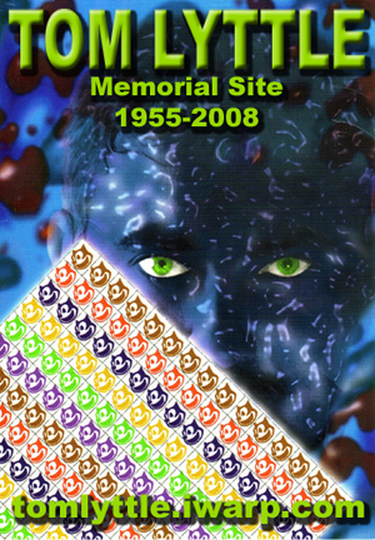
The Psychedelic Yogi
Thomas Lyttle (b. 5-5-55 / d. 9-5-08) was Publisher and Editor of the kaleidoscopic journal PSYCHEDELIC MONOGRAPHS & ESSAYS, the books PSYCHEDELICS and PSYCHEDELICS REIMAGINED (Autonomedia). Later, he sold signed blotters of non-impregnated blotter art. His articles were published by Feral Press, Disinformation, High Times, Boing Boing, New Times, Paranoia, many scholarly journals and underground zines. His blotter art included signed editions by pop icons Albert Hofmann, Timothy Leary, Peter Fonda, Allan Ginsberg, John Lilly, Ken Kesey, Ram Dass, Ira Cohen, Laura Huxley, Annie Sprinkle, Robert Anton Wilson, Alex Grey, H.R. Giger, Laurence Gartel and other noted figures of the international underground. His insightful interviews included Peter Stafford, Peter Gorman, Dan Merkur, Dr. Rick Strassman, Robert Venosa (Heads), Alex Grey (High Times), Lisa Law (Heads) Jay Fikes, Paul Krassner, Clark Heinrich, and more.
OUTLAW MYSTIC
Ever mercurial, Lyttle's interviews and performance art included such gags as pasting postage stamps all over himself to prevent arrest as First-Class Mail. He was a quirky Trickster who could be very heartful in one moment and vitriolic in the next. Still, Lyttle's works were among the first to publically discuss DMT, Ibogaine, Ayahuasca, MDMA and the Holographic Paradigm. This memorial site is not an obituary but a celebration. Many have been in-formed by his scholarly and popular articles. Let him continue to inspire us. Madman or seer, Lyttle dared to make his unique contribution and left a footprint in this world and perhaps the next.
NEW, Dec. 2010 - Tom is gone but his work lives on. Tom's blotter art collection is part of the highly successful art exhibition in London -"HIGH SOCIETY" at WELLCOME GALLERY, curated by Mike Jay
http://freeartlondon.wordpress.com/2010/11/10/drugs-and-culture-experience-high-society/
http://www.wellcomecollection.org/whats-on/exhibitions/high-society/image-galleries/self-experimentation.aspx?view=lsd-blotter-geisha
Thomas Lyttle (b. 5-5-55 / d. 9-5-08) was Publisher and Editor of the kaleidoscopic journal PSYCHEDELIC MONOGRAPHS & ESSAYS, the books PSYCHEDELICS and PSYCHEDELICS REIMAGINED (Autonomedia). Later, he sold signed blotters of non-impregnated blotter art. His articles were published by Feral Press, Disinformation, High Times, Boing Boing, New Times, Paranoia, many scholarly journals and underground zines. His blotter art included signed editions by pop icons Albert Hofmann, Timothy Leary, Peter Fonda, Allan Ginsberg, John Lilly, Ken Kesey, Ram Dass, Ira Cohen, Laura Huxley, Annie Sprinkle, Robert Anton Wilson, Alex Grey, H.R. Giger, Laurence Gartel and other noted figures of the international underground. His insightful interviews included Peter Stafford, Peter Gorman, Dan Merkur, Dr. Rick Strassman, Robert Venosa (Heads), Alex Grey (High Times), Lisa Law (Heads) Jay Fikes, Paul Krassner, Clark Heinrich, and more.
OUTLAW MYSTIC
Ever mercurial, Lyttle's interviews and performance art included such gags as pasting postage stamps all over himself to prevent arrest as First-Class Mail. He was a quirky Trickster who could be very heartful in one moment and vitriolic in the next. Still, Lyttle's works were among the first to publically discuss DMT, Ibogaine, Ayahuasca, MDMA and the Holographic Paradigm. This memorial site is not an obituary but a celebration. Many have been in-formed by his scholarly and popular articles. Let him continue to inspire us. Madman or seer, Lyttle dared to make his unique contribution and left a footprint in this world and perhaps the next.
NEW, Dec. 2010 - Tom is gone but his work lives on. Tom's blotter art collection is part of the highly successful art exhibition in London -"HIGH SOCIETY" at WELLCOME GALLERY, curated by Mike Jay
http://freeartlondon.wordpress.com/2010/11/10/drugs-and-culture-experience-high-society/
http://www.wellcomecollection.org/whats-on/exhibitions/high-society/image-galleries/self-experimentation.aspx?view=lsd-blotter-geisha
"Serenely let us move to distant places
And let no sentiments of home detain us
The Cosmic Spirit seeks not to restrain us
But lifts us stage by stage to wider spaces."
-H. Hesse, The Glass Bead Game
RANTS & RAVES
"All in all, even after all this wear and tear, "The Zero Effect" maintains and keeps me centered, is my latest personal myth. I deal with all this, via my own personal mythology, Iona." --TL
OK, so Tom Lyttle was a Borderline personality who sometimes crossed the border but he was an influential pioneer in this arena. With his eccentric orbit, Lyttle became the Strange Attractor of an astonishing cast of diverse characters from the counterculture, science, academia, art world, parapsychology, media, entertainment, medicine, psychedelic intelligentsia and more.
He studied new media, media ecology, semiotics, art, philosophy, alchemy, magick, yoga, cultural anthropology, comparative religion, metaphysics and Postmodernism to find contemporary vocabulary to express his thoughts. He inhaled the knowledge of those around him in Cyber Alley, such as Mark Stahlman. He loved to rant on with Bob Dobbs about McLuhan, Menippean satire and Dada -- subjects he picked up in the New York City psychedelic intelligentsia. He had a thing for Ganesh and used it for his icon on The Psychedelic Yogi site. He was a walking encyclopedia of mythic and shamanic lore.
He crawled the occult and punk underground. He took what fit, left the rest and found his own synthesis. Showcasing the out-of-the-box thinking of others, he 'Forest Gumped' his way through the naked underbelly of the international underground while ironically serving "Bilder-burgers" to the global elite as a chef at The Republican Club. He spent long periods of time freelancing and networking in San Francisco, New York City and the Miami area.
ACID GREEN
Lyttle's works contributed to the 'acid greening' of the post-Postmodern cultural scene which has led back to serious psychedelic research. Psychedelics have been linked with non-ordinary perception or knowledge, healing, creativity and self-actualization. Modern studies are confirming the therapeutic value in psychedelic experience.
When it comes to accessing the psychedelic state, meditators think the psychonauts are missing something, while the psychonauts think the same about them. Brain synchronization technology is closing the gap with "electronic dope." Binaural beat signals drive the brain automatically into resonance with alpha and theta facilitating altered states. The organic relationship with one's ally may indeed be lacking. But resonance therapy can easily be part of a daily regime of self-care.
Psychedelic means 'mind expanding,' 'soul revealing,' or 'mind manifesting' and doesn't always refer to drug experience. It has to do with embodying the genius of human potential, with access and penetration of our unknown heights and depths. John Curtis Gowan codified these experiences in the 1970s and his work, Development of the Psychedelic Individual *, remains a valuable reference along with others (James, Maslow, Grof, Tart, Wilber). Collective 'ego death' may be a viable model for profound changes in the global cultural landscape. We need bigger stories and bigger solutions. For some, entheogens will remain both Universal Solvent and Panacea.
* http://www.csun.edu/edpsy/Gowan/contentp.html
As Tom Lyttle puts it, "My higher-intelligence semantics... well it goes a little like this: Man is made in God's image, and while not equal to God can do everything Jesus did and more, so Jesus told all of us many times. So we are both higher-intelligence in real-time, plus HI echoing itself backwards in time, retrocausally. That way it seeds itself all ways across time as all potential. So we have feedback and feedforward in our physical neural-nets - our minds are only partly physical, however. The other parts of human consciousness, "mind-at-large" if you will... exist as orthogonal zip-files, in hyperspace...in dreamland.That is, Godhood is enfolded in each as coded-language/neural-net geometries. Some parts are physical, other parts hyperdimensional. We deconstruct, defrag, unzip, decode, decipher etc. and find the obvious - ourselves, then our higher-selves, then God, who has been sitting in our hearts waiting for us, all along, smiling."
Entheogens, Urban Myths, Paranormal, Conspiracy, Underground Art
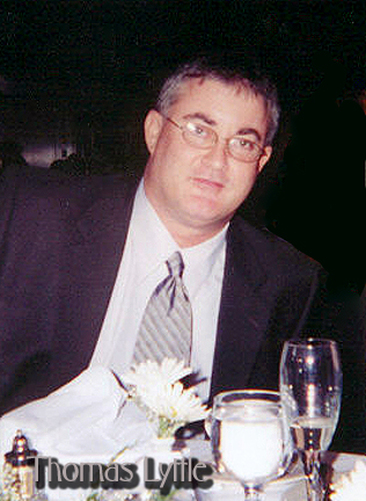
"We seem to be born with a drive to experience
episodes of altered consciousness. "
-Andrew Weil (1972:23)
A controversial writer, Tom Lyttle lived in the Bermuda Triangle and in a sort of Bermuda Triangle of the spotless mind. Mental illness ran in his family and he was not immune. His borderline behavior meant many of his friends gave him a mixed review or relegated him to their D-list. But in lucid cycles he profoundly regretted any acting out that hurt those he cared for most. A self-taught researcher, writer and artist, his unique pioneering body of work speaks for itself.
Thomas Lyttle was the publisher and editor of Psychedelic Monographs and Essays, a periodical that provided information to the counterculture at a time when mainstream publishing on the topic of illicit psychoactive drugs had slowed to a crawl. The first issue came out in the autumn of 1985, and the sixth and final issue appeared in 1993. PM&E evolved out of the newsletter the Psychozoic Press--An Informational Advisory and Communications Exchange Paper on Psychedelics, which first appeared in 1982. Editor Elvin D. Smith produced ten issues of the Psychozoic Press, and he continued to provide editorial input for PM&E until his death in 1988.
Following the conclusion of Lyttle's run as an editor and publisher, he created a "best of" compilation using selections from PM&E, titled Psychedelics: A Collection of the Most Exciting New Material on Psychedelic Drugs. Published by Barricade Books Inc. in 1994, Psychedelics saw wider distribution than PM&E had seen. The final book Lyttle edited was Psychedelics Reimagined, which contained writings by folks like Timothy Leary, Hakim Bey, Iona Miller, Otto Snow, Chris Bennett, John W. Allen, Jochen Gartz, and others.
Lyttle was an early collector and producer of LSD blotter art. He is the person who first conceived of asking psychedelic celebrities like Albert Hofmann, Timothy Leary, Sasha Shulgin, Annie Sprinkle, Peter Fonda, Allen Ginsberg, Alex Grey, Laurence Gartel, HR Giger, and others to autograph undipped sheets of blotter. This action inspired increased interest of blotter as an art form. Signed blotter became highly collectible, with rare sheets selling for hundreds or thousands of dollars. Before his death, Lyttle donated some of his more valuable pieces of blotter art to the Multidisciplinary Association for Psychedelic Studies, and the sale of autographed blotter raised around $20,000 for MAPS.
http://www.erowid.org
"TAB HUNTER" Web Links Author of (Articles)"A Close Encounter with Belladonna, Black Sheep of the Psychedelic World", Psychozoic Press 6: 33-43 (1983). "Means to an End: LSD vs. Insanity--A Personal Account", Psychozoic Press 7: 15-35 (1984). "Some Notes on Brain Chemistry, Information Processing and the Psychedelic Experience", Psychozoic Press 8: 43-58 (1984). "The Hidden Laws of Psychedelics, Sorcery & Humour or Something's Gonna Give", Psychozoic Press 9: 7-40 (1984). "De Arte Alchemistica De Hac Re Altera Intelligenda", Psychozoic Press 10: 9-12 (1985). "Drugs, Music and Ideology: A Social Pharmacological Interpretation of of The Acid House Movement" with Michael Montagne, International Journal of the Addictions 27(10): 1159-1177 (1992). "Misuse and legend in the 'toad licking' phenomenon", International Journal of the Addictions 28: 521-538 (1993). (This article was republished in The American Drug Scene: An Anthology edited by James A. Inciardi and Karen McElrath, 1998.) "Bufo toads and bufotenine: fact and fiction surrounding an alleged psychedelic" with David Goldstein and Jochen Gartz, Journal of Psychoactive Drugs 28(3): 267-90 (1996). "Toad-Licking Blues", You Are Being Lied To: The Disinformation Guide to Media Distortion, Historical Whitewashes and Cultural Myths edited by Russ Kick, 241-244 (2001). "Salvia: Smoke of Many Visions", Heads 3(6): 32-34 (December 2001). "Ibogaine: Proceedings of the First International Conference by Kenneth R. Alper and Staley D. Glick (Eds.)", book review, The Entheogen Review 11(1): 37-38. (Spring 2002). "LSD Blotter Art", MAPS Bulletin 14(1): 35-37 (2004). Editor of (Books/Journals) Psychedelic Monograph's (sic) and Essays, Volume One (Autumn 1985). Psychedelic Monographs and Essays, Volume Two (Summer 1987). Psychedelic Monographs & Essays, Volume Three (Spring 1988). Psychedelic Monographs and Essays, Volume Four (1989/1990). Psychedelic Monographs and Essays, Volume Five (1990/1991). Psychedelic Monographs and Essays, Volume Six (1993). Psychedelics: A Collection of the Most Exciting New Material on Psychedelic Drugs (1994). Psychedelics Reimagined (1999). Interviews of "Thomas Lyttle Interview" by Jim DeKorne, The Entheogen Review 3(1): 7 (Spring 1994). "Burning Shiva: Thomas Lyttle, Psychedelic Man" interviewed by Chris Bennett, Pot-TV (2003). Interviews by "Dan Merkur Speaks...", The Entheogen Review 9(3): 122-127 (2000). "The High Times Interview: Alex Grey - Visions of Alex", High Times (June 2002). "Jay C. Fikes Speaks...", The Entheogen Review 11(3): 81-93 (Autumn 2002). Links
Blotter Art by Tom Lyttle
If someone should ask "What is the psychedelic stage without psychic powers?" the clear answer is that it is contact with, and control of, the preconscious by the conscious mind, which produces beneficial mental health effects in the person and in his environment. This amelioration extends to his personal health and happiness, to youthful vigor and energy, to the warding off of harmful events, accidents, and disease, to the selection and visualization of desirable future occurrences, and the making manifest of them, and finally to an enlargement of service in his life work. It may also involve psychedelic experiences of union, rapture, samadhi, satori, or however else the peak experience may be described.
Psychic pyrotechnics, however spectacular, cannot bring any individual to the unitive consciousness. There are furthermore, notable examples from all times and cultures of individuals of indisputable psychological soundness or holiness who have not had such experiences. The seventh stage is appropriately named the psychedelic stage (for mind expansion) not the psychic stage. It is the cosmic expansion of man's mind which is important, not psychic tricks, which are the mere epiphenomena of it. --John Curtis Gowan, Development of the Psychedelic Individual Let there be light! Let the dawn rise over heavens and earth! There can be no glory, no splendor Until the humanistic being exists, The fully developed man. Popol Vuh
***If you have memorabilia, citations, articles or photos of Tom Lyttle that can be added to this archive, email Iona .***
episodes of altered consciousness. "
-Andrew Weil (1972:23)
A controversial writer, Tom Lyttle lived in the Bermuda Triangle and in a sort of Bermuda Triangle of the spotless mind. Mental illness ran in his family and he was not immune. His borderline behavior meant many of his friends gave him a mixed review or relegated him to their D-list. But in lucid cycles he profoundly regretted any acting out that hurt those he cared for most. A self-taught researcher, writer and artist, his unique pioneering body of work speaks for itself.
Thomas Lyttle was the publisher and editor of Psychedelic Monographs and Essays, a periodical that provided information to the counterculture at a time when mainstream publishing on the topic of illicit psychoactive drugs had slowed to a crawl. The first issue came out in the autumn of 1985, and the sixth and final issue appeared in 1993. PM&E evolved out of the newsletter the Psychozoic Press--An Informational Advisory and Communications Exchange Paper on Psychedelics, which first appeared in 1982. Editor Elvin D. Smith produced ten issues of the Psychozoic Press, and he continued to provide editorial input for PM&E until his death in 1988.
Following the conclusion of Lyttle's run as an editor and publisher, he created a "best of" compilation using selections from PM&E, titled Psychedelics: A Collection of the Most Exciting New Material on Psychedelic Drugs. Published by Barricade Books Inc. in 1994, Psychedelics saw wider distribution than PM&E had seen. The final book Lyttle edited was Psychedelics Reimagined, which contained writings by folks like Timothy Leary, Hakim Bey, Iona Miller, Otto Snow, Chris Bennett, John W. Allen, Jochen Gartz, and others.
Lyttle was an early collector and producer of LSD blotter art. He is the person who first conceived of asking psychedelic celebrities like Albert Hofmann, Timothy Leary, Sasha Shulgin, Annie Sprinkle, Peter Fonda, Allen Ginsberg, Alex Grey, Laurence Gartel, HR Giger, and others to autograph undipped sheets of blotter. This action inspired increased interest of blotter as an art form. Signed blotter became highly collectible, with rare sheets selling for hundreds or thousands of dollars. Before his death, Lyttle donated some of his more valuable pieces of blotter art to the Multidisciplinary Association for Psychedelic Studies, and the sale of autographed blotter raised around $20,000 for MAPS.
http://www.erowid.org
"TAB HUNTER" Web Links Author of (Articles)
***If you have memorabilia, citations, articles or photos of Tom Lyttle that can be added to this archive, email Iona .***
HIGH TIMES
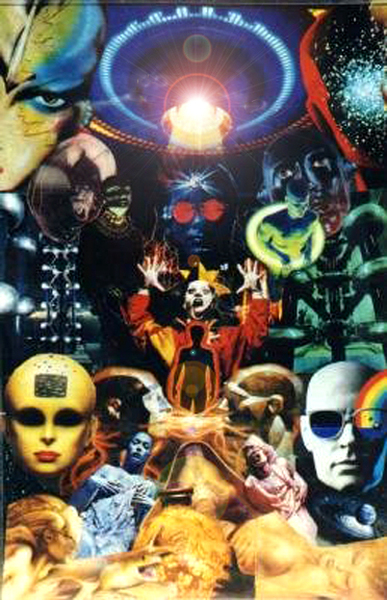
Trickster Thomas Thom Tom Lyttle
Can we out-trick the Trickster? Can we use our imaginations to cure the imagination? Can we use magick? Through ritual? The hermetic personality is the magician, the shape-shifter, the trickster even liar, the chameleon. Alchemy and magick were the psychological languages of the past. Synchronistic events are those subjective experiences that make up life's meaningful coincidences.
Writing was originally a form of magic, an epiphany with the god and secret of the priests. It is perhaps mankind's most far-reaching creation, taking almost an infinite variety of forms. Many societies have created their own forms of conventional visible marks linked to spoken language. No other invention but the wheel has had such a lasting impact. A holistic understanding of the universe presents itself to the mind through experience and is comprehended at the theoretical level through the activities of science.
We create myths to satisfy our need to understand our environment and to give us some sense of control over it, or at least an understood place within it. We need a way to make the myth real to us, and that is the fundamental reason why we connect ritual to our myths. Both meditation and ritual can lead to the spillover effect and the simultaneous discharge of the arousal and quiescent systems. Meditation begins with the quiescent system and by its hyperactiviation can achieve spillover into the arousal system (from trophotropic to ergotropic). Ritual approaches from the opposite system (from ergotropic to trophotropic).
Watts (1972:354) uses "psychedelic" to mean 'mind manifesting.' Natural psychedelic experiences occur in a wide number of differing situations, involving certain common elements:
1) The attention of the subject is gripped, and his perception narrowed or focused on a single event or sensation;
2) which appears to be an experience of surpassing beauty or worth;
3) in which values or relationships never before realized are instantaneously or very suddenly emphasized;
4) resulting in the sudden emergence of great joy and an orgiastic experience of ecstasy;
5) in which individual barriers separating the self from others or nature are broken down;
6) resulting in a release of love, confidence, or power; and
7) some kind of change in the subsequent personality, behavior, or artistic product after the rapture is over.
The essential component of the psychedelic stage or process is a sudden opening of the mind to enlargement, to a grander vista than ever seen before, with a power surge which is analogous to shifting into overdrive in an auto. There has been an acceleration of process, and this acceleration becomes capable of occasional return under proper conditions of environmental stimulation. The interior conditions for this process are that the boundaries between the ego and the preconscious open up and the psychedelic mind expansion is felt because the conscious mind is suddenly master in an enlarged domain. There is a close relationship between psychic and psychedelic events, the one seen as an event in an expanded natural environment, and the other seen as an event in an expanded natural consciousness.
The word "psychic" can refer to parasensory events in an expanded natural environment, which are capable of being explained by natural law, although the principle may not have been discovered at this time. We shall use the word "psychedelic" as pertaining especially to the mind-expansion of certain developmentally related experiences which may occur to the consciousness under a variety of stimulating circumstances, only one of which is that represented by drugs. Hence, psychic and psychedelic are two aspects of the same domain.
One important distinction between psychic and psychedelic is that psychic experiences are not developmental and psychedelic are. That is, psychic experiences may occur to the individual at any state of development, but psychedelic experiences, wherein the mind-expansion occurs with some degree of rationality and control, are definitely confined to the seventh stage (generativity-psychedelia), and hence when these mystic or peak experiences occur, it is a sign that the individual's development has reached that level.
Psychedelic experiences take place in an altered state of consciousness, although not all ASC experiences are psychedelic (e.g. dreaming). It is important to note that psychedelic experiences can be triggered by simple changes in sensory input (as well as by ingestation of drugs). Ludwig (Prince 1968:71-5) catalogues four pages of various categories of altered states of consciousness resulting from: a) reduction of sensory stimulation, b) increase in sensory stimulation, c) increase in alertness,d) decrease in alertness, and e) presence of somato-physiological factors.
Prince (1968:133-5) marshals impressive evidence that drum beats approximating 8-13 hertz (the alpha range) are very effective in inducing an altered state of consciousness. ASC's can be induced by more subtle stimuli such as sexual ecstasy, natural beauty, or religious fervor. And some, but not all altered states lead to psychic experiences or powers. -- Psychedelic Individual
Can we out-trick the Trickster? Can we use our imaginations to cure the imagination? Can we use magick? Through ritual? The hermetic personality is the magician, the shape-shifter, the trickster even liar, the chameleon. Alchemy and magick were the psychological languages of the past. Synchronistic events are those subjective experiences that make up life's meaningful coincidences.
Writing was originally a form of magic, an epiphany with the god and secret of the priests. It is perhaps mankind's most far-reaching creation, taking almost an infinite variety of forms. Many societies have created their own forms of conventional visible marks linked to spoken language. No other invention but the wheel has had such a lasting impact. A holistic understanding of the universe presents itself to the mind through experience and is comprehended at the theoretical level through the activities of science.
We create myths to satisfy our need to understand our environment and to give us some sense of control over it, or at least an understood place within it. We need a way to make the myth real to us, and that is the fundamental reason why we connect ritual to our myths. Both meditation and ritual can lead to the spillover effect and the simultaneous discharge of the arousal and quiescent systems. Meditation begins with the quiescent system and by its hyperactiviation can achieve spillover into the arousal system (from trophotropic to ergotropic). Ritual approaches from the opposite system (from ergotropic to trophotropic).
Watts (1972:354) uses "psychedelic" to mean 'mind manifesting.' Natural psychedelic experiences occur in a wide number of differing situations, involving certain common elements:
1) The attention of the subject is gripped, and his perception narrowed or focused on a single event or sensation;
2) which appears to be an experience of surpassing beauty or worth;
3) in which values or relationships never before realized are instantaneously or very suddenly emphasized;
4) resulting in the sudden emergence of great joy and an orgiastic experience of ecstasy;
5) in which individual barriers separating the self from others or nature are broken down;
6) resulting in a release of love, confidence, or power; and
7) some kind of change in the subsequent personality, behavior, or artistic product after the rapture is over.
The essential component of the psychedelic stage or process is a sudden opening of the mind to enlargement, to a grander vista than ever seen before, with a power surge which is analogous to shifting into overdrive in an auto. There has been an acceleration of process, and this acceleration becomes capable of occasional return under proper conditions of environmental stimulation. The interior conditions for this process are that the boundaries between the ego and the preconscious open up and the psychedelic mind expansion is felt because the conscious mind is suddenly master in an enlarged domain. There is a close relationship between psychic and psychedelic events, the one seen as an event in an expanded natural environment, and the other seen as an event in an expanded natural consciousness.
The word "psychic" can refer to parasensory events in an expanded natural environment, which are capable of being explained by natural law, although the principle may not have been discovered at this time. We shall use the word "psychedelic" as pertaining especially to the mind-expansion of certain developmentally related experiences which may occur to the consciousness under a variety of stimulating circumstances, only one of which is that represented by drugs. Hence, psychic and psychedelic are two aspects of the same domain.
One important distinction between psychic and psychedelic is that psychic experiences are not developmental and psychedelic are. That is, psychic experiences may occur to the individual at any state of development, but psychedelic experiences, wherein the mind-expansion occurs with some degree of rationality and control, are definitely confined to the seventh stage (generativity-psychedelia), and hence when these mystic or peak experiences occur, it is a sign that the individual's development has reached that level.
Psychedelic experiences take place in an altered state of consciousness, although not all ASC experiences are psychedelic (e.g. dreaming). It is important to note that psychedelic experiences can be triggered by simple changes in sensory input (as well as by ingestation of drugs). Ludwig (Prince 1968:71-5) catalogues four pages of various categories of altered states of consciousness resulting from: a) reduction of sensory stimulation, b) increase in sensory stimulation, c) increase in alertness,d) decrease in alertness, and e) presence of somato-physiological factors.
Prince (1968:133-5) marshals impressive evidence that drum beats approximating 8-13 hertz (the alpha range) are very effective in inducing an altered state of consciousness. ASC's can be induced by more subtle stimuli such as sexual ecstasy, natural beauty, or religious fervor. And some, but not all altered states lead to psychic experiences or powers. -- Psychedelic Individual
WOUNDED HEALER
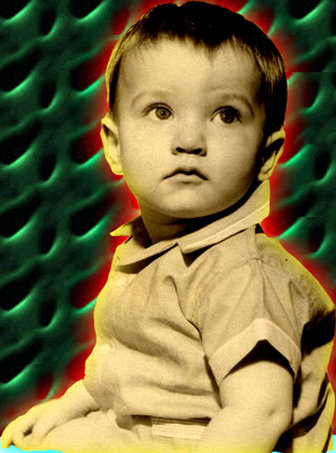
Wounded Healer: We all suffer but some turn it to great purpose. In initiation if it doesn't hurt, it doesn't mean anything.
Souls seek their spiritual connection - with self - a savior - God - higher consciousness. We seek to return to our primordial roots and our celestial heights. But what does that mean? Return to do what? Save the wounded souls from what? Lead them where? The wounds of the 3D experience give way to balance and movement to higher levels of consciousness. It is about letting go of the ties that bind you to the emotions of the physical realms and the rebirth of your soul/consciousness in higher being and light - higher frequency of thought and understanding.
Saviors have experienced great pain and suffering - wounds inflicted and imprinted on their soul. Human consciousness has become aware that it is dysfunctional and needs healing to create balance. Our emotions range from love to the pain inflicted by the wounds we and those around us create. It is in truth all about growth and experience which is why we often feel abandoned by our god-figure who allows us to suffer. We spend much of our time healing our wounds. We come to metaphysics or drugs for answers we cannot find in the world - for our souls know the physical is not the whole truth.
Those healed become the healers...but it is a continuous process of healing, in which consciousness is being awakened. The 'wounds' - of many lifetimes need to heal.... This is the spiritual pulse. But what happens when the Wounded Healer is healed and has had enough drama with healing? Then they are shown the truth behind the illusion of reality. The difficulties in our lives are initiations for a higher calling. It becomes easier to forgive whatever seemed to bring the difficulty upon us. It's about reframing the entire experience of our challenges by seeing the perfection in them, seeing that they are necessary steps toward transformation and wholeness.
Who is The Wounded Healer?... the person who has gone through a Dark Night of the Soul, deep depression, great suffering, mental illness or breakdown - and as a result of that process has become a source of great wisdom, healing power and inspiration for others. In fact, the archetypal wounded healer undergoes a transformation as a result of their wound, their suffering and pain. They can actually transcend it, and successfully lead themselves to a path of service. It is as if the wound itself helps you drive yourself to an inner journey that becomes the transformation itself. One strips away the selfish, ego-based feeling of being all alone in our wound and expands to see others and how if one chooses a different role, one can help.
The Wounded Healer is often the Victim - He who must suffer the wounds of life to understand.
Souls seek their spiritual connection - with self - a savior - God - higher consciousness. We seek to return to our primordial roots and our celestial heights. But what does that mean? Return to do what? Save the wounded souls from what? Lead them where? The wounds of the 3D experience give way to balance and movement to higher levels of consciousness. It is about letting go of the ties that bind you to the emotions of the physical realms and the rebirth of your soul/consciousness in higher being and light - higher frequency of thought and understanding.
Saviors have experienced great pain and suffering - wounds inflicted and imprinted on their soul. Human consciousness has become aware that it is dysfunctional and needs healing to create balance. Our emotions range from love to the pain inflicted by the wounds we and those around us create. It is in truth all about growth and experience which is why we often feel abandoned by our god-figure who allows us to suffer. We spend much of our time healing our wounds. We come to metaphysics or drugs for answers we cannot find in the world - for our souls know the physical is not the whole truth.
Those healed become the healers...but it is a continuous process of healing, in which consciousness is being awakened. The 'wounds' - of many lifetimes need to heal.... This is the spiritual pulse. But what happens when the Wounded Healer is healed and has had enough drama with healing? Then they are shown the truth behind the illusion of reality. The difficulties in our lives are initiations for a higher calling. It becomes easier to forgive whatever seemed to bring the difficulty upon us. It's about reframing the entire experience of our challenges by seeing the perfection in them, seeing that they are necessary steps toward transformation and wholeness.
Who is The Wounded Healer?... the person who has gone through a Dark Night of the Soul, deep depression, great suffering, mental illness or breakdown - and as a result of that process has become a source of great wisdom, healing power and inspiration for others. In fact, the archetypal wounded healer undergoes a transformation as a result of their wound, their suffering and pain. They can actually transcend it, and successfully lead themselves to a path of service. It is as if the wound itself helps you drive yourself to an inner journey that becomes the transformation itself. One strips away the selfish, ego-based feeling of being all alone in our wound and expands to see others and how if one chooses a different role, one can help.
The Wounded Healer is often the Victim - He who must suffer the wounds of life to understand.
Site Curator: Iona Miller - http://ionamiller.weebly.com/
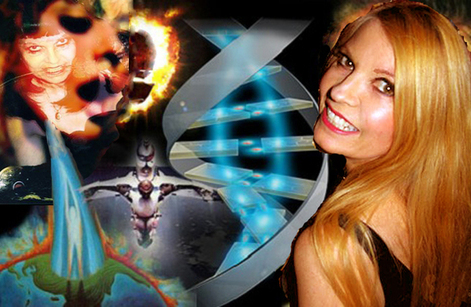
JOIN ME ON FACEBOOK :
http://www.facebook.com/iona.miller
TRANSFORMATION AGENT: Rather than having an interest in specific doctrines, she is interested in the transformations, the EFFECTS of doctrines from religion, science, psychology, politics and the arts. Our beliefs are the moldable raw material of the psyche, manipulated by governments, media and culture. How do we become what we are and how is that process changing in the near future?
Iona Miller is a nonfiction writer for the academic and popular press, clinical hypnotherapist (ACHE) and multimedia artist. Her work is an omni-sensory fusion of intelligence, science-art, new physics, symbolism, source mysticism, futuring, and emergent paradigm shift, creating a unique viewpoint. She is interested in extraordinary human potential and experience, and the EFFECTS of doctrines of religion, science, psychology, and the arts. She serves on the Advisory Boards of Journal of Consciousness Exploration & Research, DNA Decipher Journal, and Scientific God Journal, as well as the Board of Directors of Medigrace, Inc., and Editorial Board of CRAFT (Community Resilience through Action for Future Transitions). Ms. Miller is published by Phanes Press, Destiny Books (Inner Traditions), Autonomedia, Nexus Magazine, Paranoia Magazine, Alchemy Journal, Green Egg, Bibliotheca Alexandrina, DNA Decipher Journal, Scientific God Journal, Journal of Consciousness Exploration & Research, Dream Network, Journal of Nonlocality & Remote Mental Interactions (JNLRMI), Chaosophy Journal, OAK, PM&E, DNA Monthly, Antibothis, Pop Occulture, and more.
http://www.facebook.com/iona.miller
TRANSFORMATION AGENT: Rather than having an interest in specific doctrines, she is interested in the transformations, the EFFECTS of doctrines from religion, science, psychology, politics and the arts. Our beliefs are the moldable raw material of the psyche, manipulated by governments, media and culture. How do we become what we are and how is that process changing in the near future?
Iona Miller is a nonfiction writer for the academic and popular press, clinical hypnotherapist (ACHE) and multimedia artist. Her work is an omni-sensory fusion of intelligence, science-art, new physics, symbolism, source mysticism, futuring, and emergent paradigm shift, creating a unique viewpoint. She is interested in extraordinary human potential and experience, and the EFFECTS of doctrines of religion, science, psychology, and the arts. She serves on the Advisory Boards of Journal of Consciousness Exploration & Research, DNA Decipher Journal, and Scientific God Journal, as well as the Board of Directors of Medigrace, Inc., and Editorial Board of CRAFT (Community Resilience through Action for Future Transitions). Ms. Miller is published by Phanes Press, Destiny Books (Inner Traditions), Autonomedia, Nexus Magazine, Paranoia Magazine, Alchemy Journal, Green Egg, Bibliotheca Alexandrina, DNA Decipher Journal, Scientific God Journal, Journal of Consciousness Exploration & Research, Dream Network, Journal of Nonlocality & Remote Mental Interactions (JNLRMI), Chaosophy Journal, OAK, PM&E, DNA Monthly, Antibothis, Pop Occulture, and more.
(c)2010-2015, ALL RIGHTS RESERVED for this site by Iona Miller & Constance Lyttle
